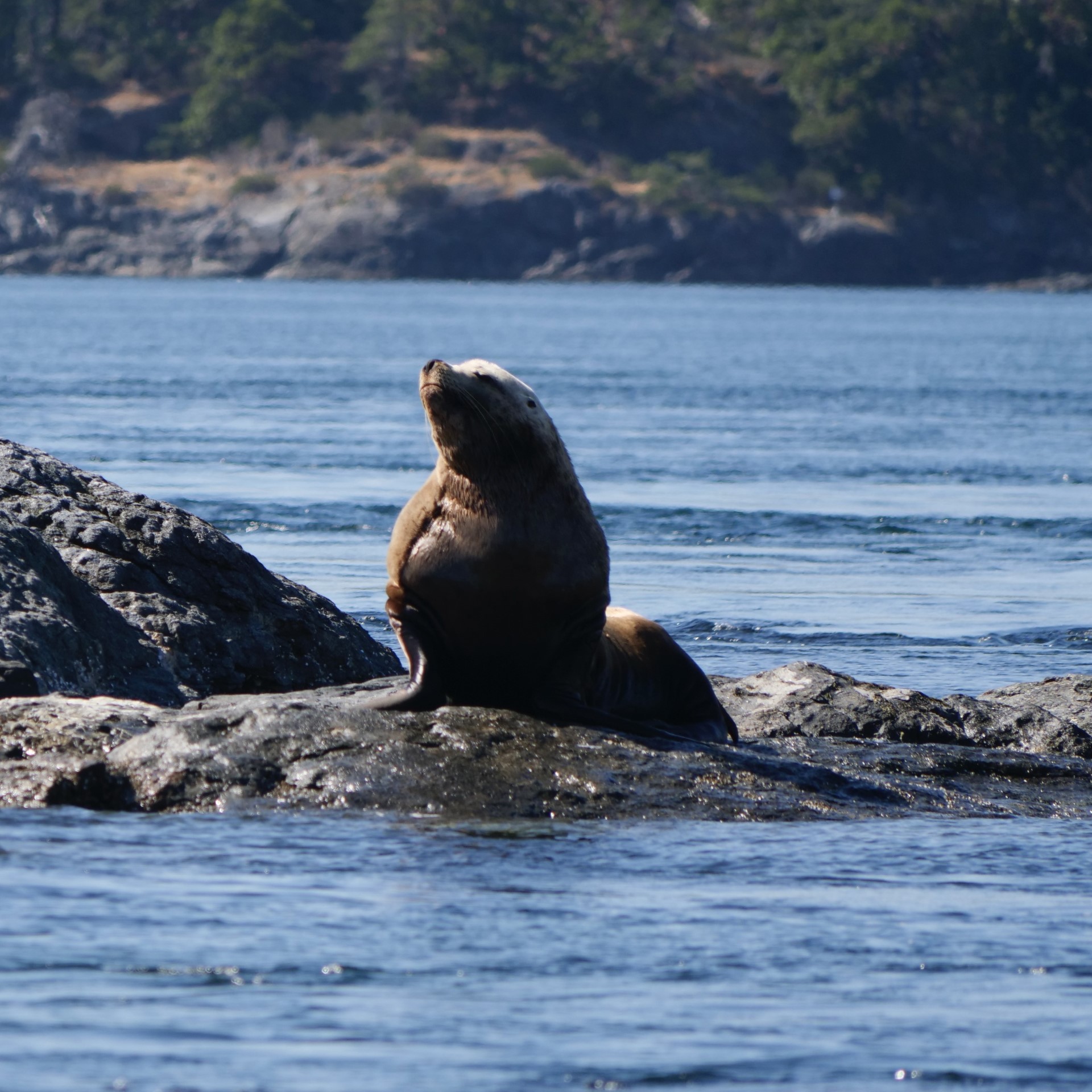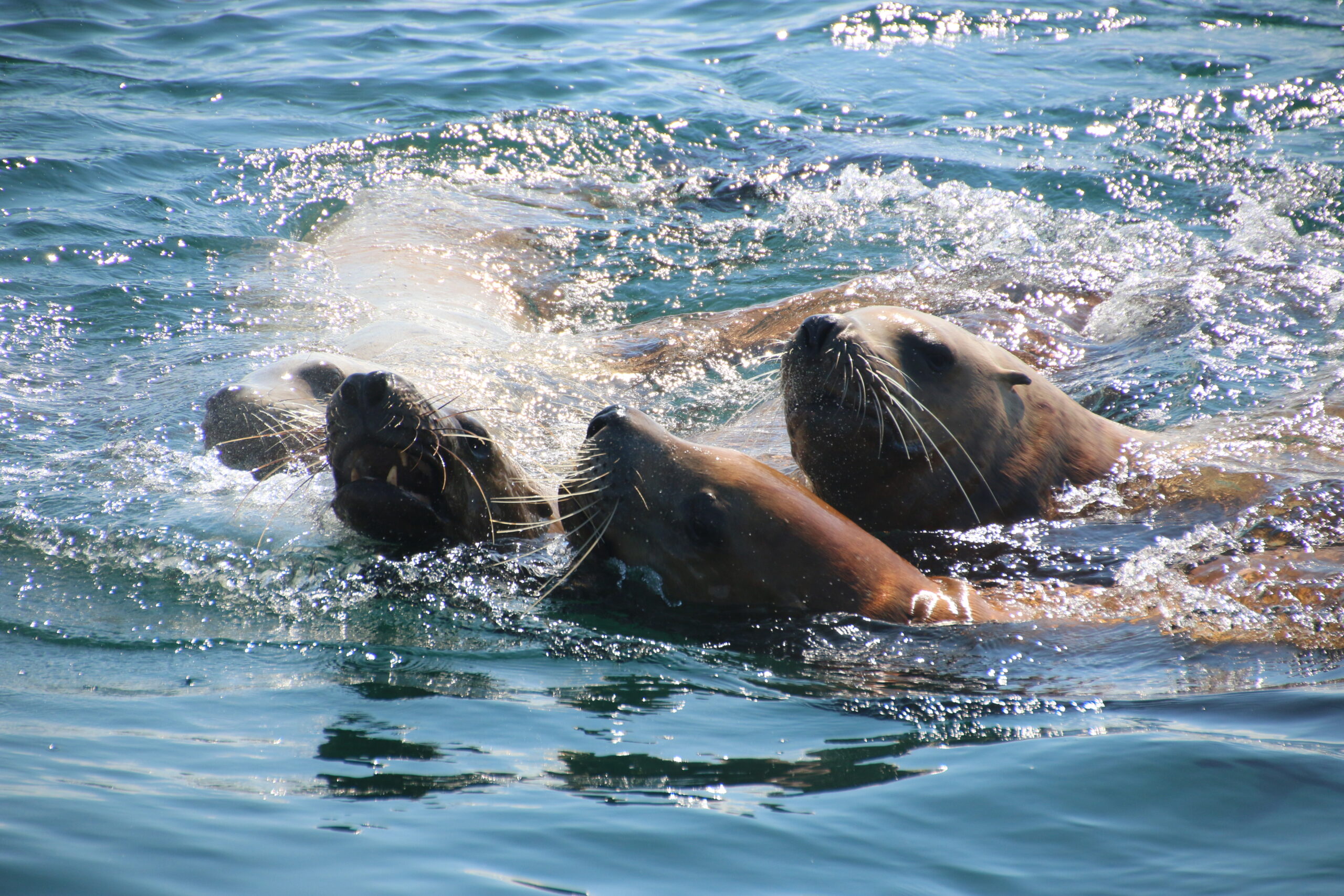 The time has come again; sooner than we would wish, summer is coming to an end. As fall creeps closer, our crew has been noticing that the Race Rocks Marine Ecological Reserve is getting more and more crowded. For Steller and California sea lions, this area of the Pacific Coast is a fall and winter refuge. During the high summer season, the sea lions head to their separate breeding locales (the coast of California and Mexico for the California sea lions, and northern BC and Alaska for the Stellers). At the end of breeding season, the males leave the females and pups to take a restful vacation off the shores of British Columbia.
The time has come again; sooner than we would wish, summer is coming to an end. As fall creeps closer, our crew has been noticing that the Race Rocks Marine Ecological Reserve is getting more and more crowded. For Steller and California sea lions, this area of the Pacific Coast is a fall and winter refuge. During the high summer season, the sea lions head to their separate breeding locales (the coast of California and Mexico for the California sea lions, and northern BC and Alaska for the Stellers). At the end of breeding season, the males leave the females and pups to take a restful vacation off the shores of British Columbia.
Victoria is close to the southernmost extent of the range of the Steller sea lion, and the northernmost extent of the California sea lions’ range. That means that Race Rocks is one of the few places in the world where our guests can watch the two species in the same place at the same time. While whales and other cetaceans are the primary focus of our summer excursions, pinnipeds can be exciting marine mammals to watch as well. Visiting the sea lions at the Race Rocks Ecological Reserve can be one of the highlights of any trip. During our fall and winter wildlife excursions, these raucous pinnipeds are a real delight. To celebrate the return of sea lions to Race Rocks, I wanted to devote a blog post to our furred marine mammal friends.
‘Sea lion’ is a common name for several members of the group of marine mammals known as Pinnipeds (meaning ‘fin-footed’). Pinnipeds come in many shapes and sizes, including all seals, sea lions, fur seals and walruses. Sea lions and fur seals together form a group called Otariids, or ‘eared seals’. Otariids differ from ‘true’ or earless seals (e.g. harbour seals, bearded seals, leopard seals, monk seals) in several ways. They are better adapted to moving on land, with front flippers that can support their weight and hind flippers that rotate on hips, allowing them to lumber around on the rocks on four limbs. In the water, sea lions and fur seals propel themselves forward with their front flippers, making them fast and manoeuvrable. They breed on land in large rookeries, and when pups are born, mother sea lions nurse for several months. While they are nursing, sea lion moms will take long trips to sea to feed themselves, leaving their pups behind.
Sea lions are carnivores, feeding on medium-to-large fish like salmon, hake, rockfish and anchovy. They will also eat squid or octopus – they’re not too picky! Most of the sea lions we get around here are males, since the females and pups tend to stay in their breeding ranges.
Around Race Rocks, it’s common to see male California and Steller sea lions on the same rocks, right next to each other. The two species don’t appear to be territorial in this area, although they prefer the company of their own kind. So if they’re mingling together, how does one tell them apart? Here’s a quick guide:
Size:
California sea lions are smaller, with males weighing in at around 700 lbs. Steller sea lion males are larger, weighing up to 2500 lbs.
Colour:
California sea lions are dark brown in colour, whereas Stellers are ‘blonde’, ranging from yellowish to light brown in colour. Of course, when they are wet, Steller sea lions look about as dark as California sea lions when they are dry!
Sound:
This is by far the best way to tell the two species apart. Sea lions are very vocal, and the sounds they make sound very different. California sea lions bark and Steller sea lions growl (well, I say growl, but it sounds more like a belch).
Whichever the species, sea lions are fun to watch – they posture and play-fight with each other, sometimes pushing one another into the water. They often lie on the rocks, sleeping peacefully with their faces smooshed into the rocks or scratching themselves with the long claws on their back flippers, much like dogs do. It looks like a crowd scene from a movie – there’s so much going on! While I’m sad to see the end of summer coming, I sure am glad to see the return of the sea lions, and all the fun they bring in the fall.
—
Kat Nikolich, MSc
Onboard Naturalist/Biologist for SpringTide Whale Watching & Eco Tours

